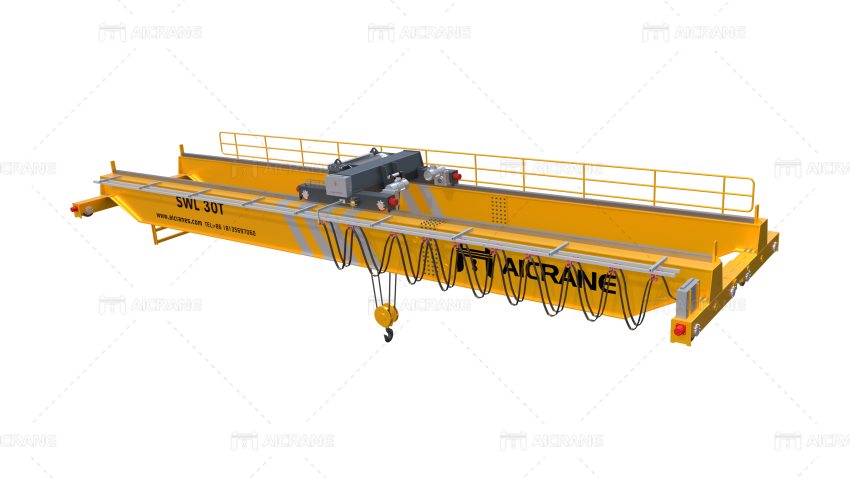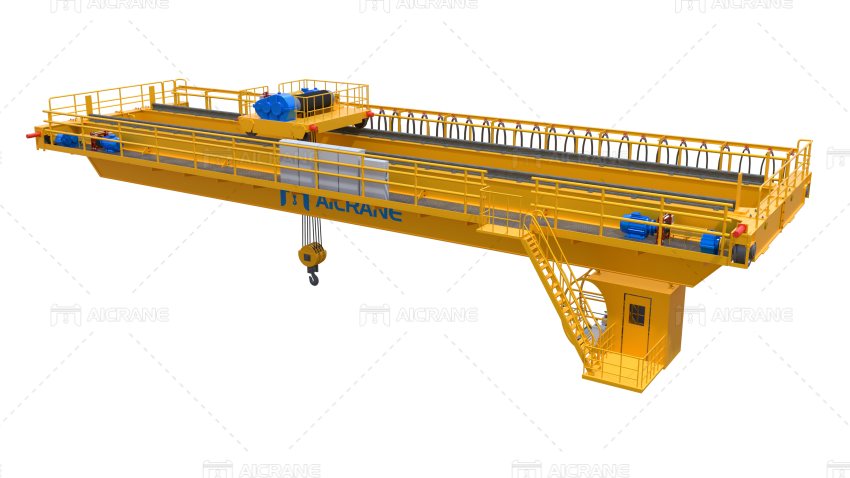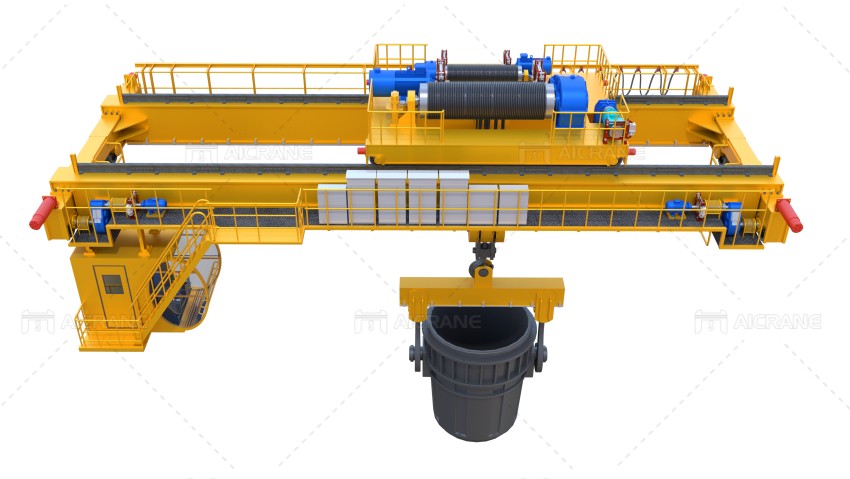30-ton bridge cranes are powerful lifting machines that find widespread use in industries requiring heavy-duty material handling. These cranes are designed to provide efficient and safe lifting operations, enabling the movement of heavy loads with precision and ease. In this article, we will explore the main structure of a 30-ton bridge crane, discuss safe operation practices, highlight the industries where these cranes are commonly used, and explore their smart features and other advantages.

Main Structure of a 30-Ton Bridge Crane
A 30-ton bridge crane consists of several key components that work together to ensure safe and efficient lifting operations:
Bridge Girder: The bridge girder is the main horizontal beam that spans the distance between the end trucks. It provides support for the entire weight of the crane and the load being lifted. The bridge girder is typically made of structural steel and is engineered to withstand heavy loads.
End Trucks: The end trucks are located on either side of the bridge girder and house the wheels that allow the crane to travel along the runway. The end trucks are equipped with drive mechanisms, brakes, and motorized systems for smooth and controlled movement.
Hoist and Trolley: The hoist and trolley system is responsible for lifting and moving loads horizontally. The hoist mechanism is mounted on the trolley, which runs along the bridge girder. The hoist is equipped with a lifting hook or other load-handling attachments to secure the load.
Runway Rails: The runway rails are installed parallel to each other, providing a stable track for the bridge crane to move along. The end trucks ride on these rails, allowing the crane to traverse the length of the runway.

Safe Operation of a 30-Ton Bridge Crane
Safe operation of a 30-ton bridge crane is of paramount importance to protect personnel and equipment. Here are some key guidelines to ensure safe operation:
Operator Training: Crane operators should receive thorough training on the specific operation and controls of the 30 ton bridge crane. They should be familiar with load limits, emergency procedures, and safety protocols to handle various lifting scenarios.
Pre-Operational Inspection: Prior to each use, the crane should undergo a pre-operational inspection. This includes checking for any signs of wear or damage, examining wire ropes, inspecting hooks and attachments, and ensuring all safety devices are functional.
Load Capacity and Balance: Operators must adhere to the crane’s load capacity specifications to prevent overloading. It is crucial to properly balance the load and ensure it is securely attached to the lifting hook or attachments.
Clear Communication: Effective communication between the crane operator and other personnel involved in the lifting operation is vital. Clear signals should be established and understood by all parties to ensure safe movement and positioning of loads.
Proximity and Obstacle Awareness: Operators should be vigilant and aware of their surroundings. They must maintain a safe distance from personnel, structures, and other obstacles to prevent collisions or accidents.

Industries Where the 30-Ton Bridge Crane is Used
30-ton bridge cranes are versatile lifting solutions suitable for various industries, including:
Manufacturing and Heavy Industrial Facilities: These cranes are commonly found in manufacturing plants, steel mills, and other heavy industrial facilities where large and heavy components or machinery need to be moved and positioned with precision.
Warehousing and Distribution Centers: Bridge cranes are utilized in warehouses and distribution centers to handle heavy loads, such as pallets, containers, or machinery, with efficiency and speed.
Construction Sites: The 30-ton bridge crane, usually designed as double girder crane type, is often employed at construction sites for lifting and moving construction materials, prefabricated components, and equipment.
Smart Features and Advantages of 30-Ton Bridge Cranes
Modern 30-ton bridge cranes often incorporate smart features and advanced technologies that enhance efficiency and safety, including:
Remote Control Operation: Some bridge cranes are equipped with remote control systems, allowing operators to control the crane’s movement and lifting operations from a safe distance.
Load Monitoring and Anti-Sway Systems: Advanced load monitoring systems help prevent overloading and provide real-time information to the operator. Anti-sway systems minimize load swinging during movement, ensuring smoother and safer operations.
Collision Avoidance Systems: Bridge cranes can be equipped with collision avoidance systems that utilize sensors and alarms to detect and prevent potential collisions with objects or other cranes in the vicinity.
Programmable Logic Controllers (PLCs): PLCs automate and streamline crane operations by integrating various functions and allowing for customized programming to suit specific lifting requirements.
The 30-ton bridge crane is a powerful and efficient lifting solution utilized in various industries for heavy material handling. Understanding the main structure, following safe operation practices, and incorporating smart features ensure smooth and secure lifting operations. Whether in manufacturing, warehousing, or construction, these cranes provide a reliable means to move heavy loads with precision and ease, enhancing productivity and operational efficiency across industries.
